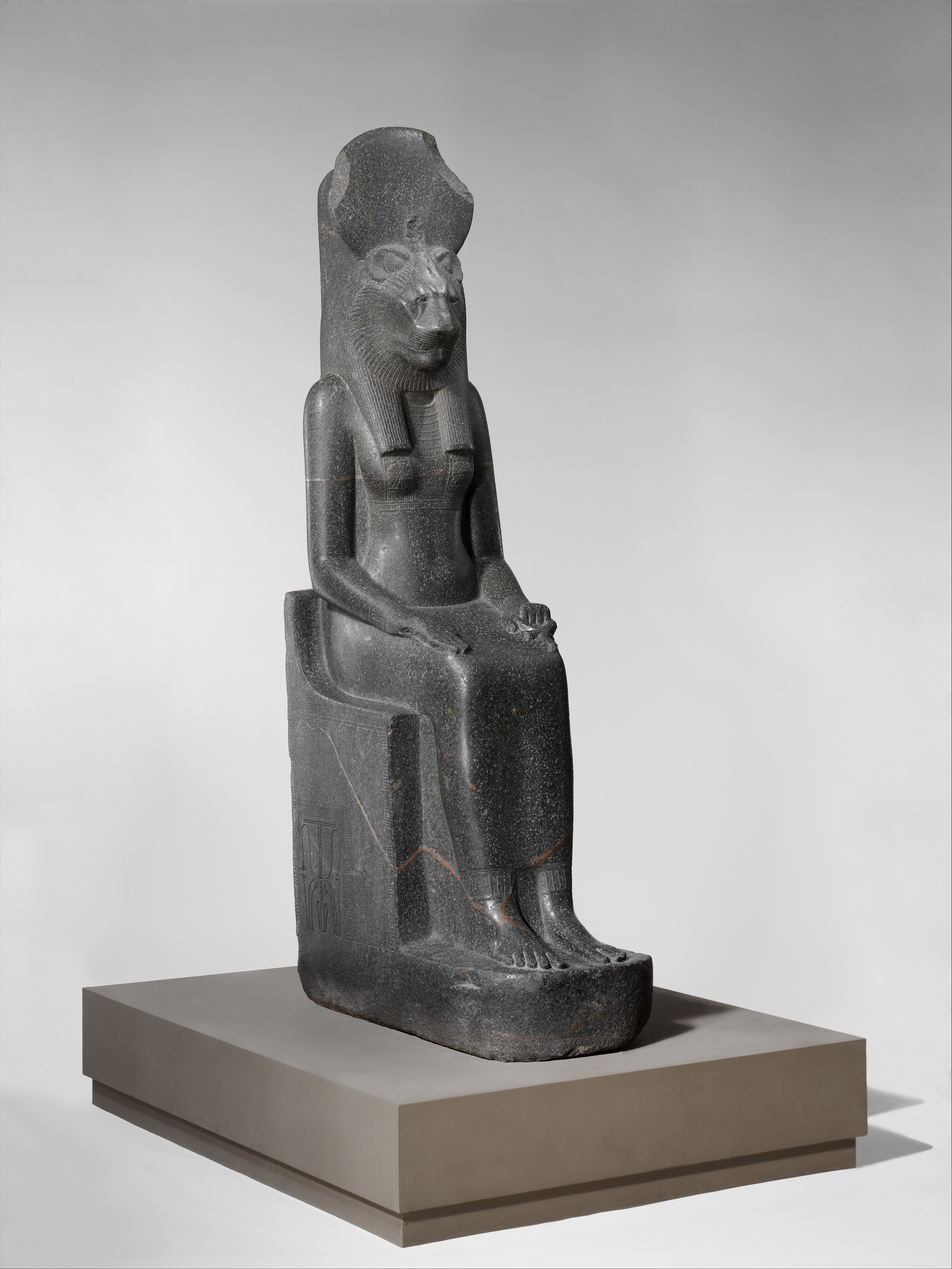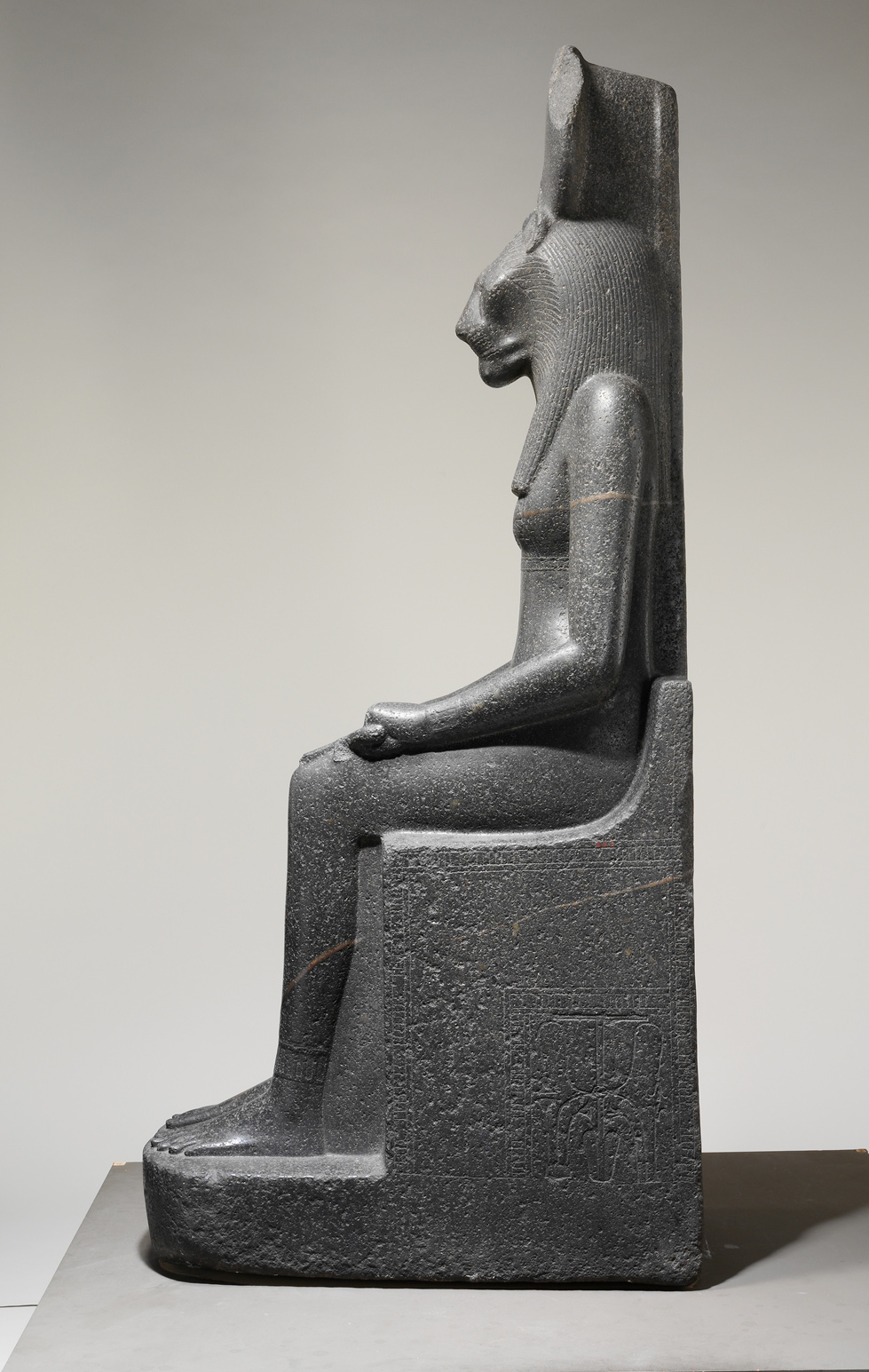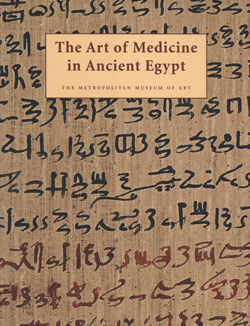Statue of the Goddess Sakhmet
New Kingdom
The goddess Sakhmet, whose lioness head with its small intense eyes and prominent sinewy jaws bespeaks her potential for violence, elicited great efforts of appeasement. This is one of some six hundred statues of the goddess created during the reign of Amenhotep III that either still stand in, or can be traced to, two main locales: the mortuary complex of the king at Kom el Heitan on the Theban west bank, and the Mut Temple Complex at Karnak on the east bank at Thebes. This statue was most likely found at the latter site.
It was long thought that the king himself had erected statues in both places, but today many scholars believe that originally the statues all stood at the Kom el Heitan mortuary temple. There they formed part of Amenhotep’s massive statuary program. The Sakhmet statues have convincingly been shown to have constituted a "litany in stone" that appeased the goddess and invoked her not to use her negative powers, thereby delivering the king from illness and evil for a year. Based on our understanding of the litany, there may originally have been 730 statues, one seated and one standing for each day of the year. Moreover, it has been theorized they were arranged, along with other divine statues, across the giant courts at Kom el Heitan to form a vast celestial map that served as the king's eternal ritual calendar.
The mortuary temple of Amenhotep III apparently began to suffer from rising groundwater not long after its construction, and statues and building materials within its precinct were removed to other sites. Many of the statues of Sakhmet thus had a second stage of life after their original deployment. The violent and powerful goddess was linked with the goddess Mut, wife of Amun, who was worshipped in the Precinct of Mut south of Karnak temple. Statues of Sakhmet had probably already begun to be moved to the Mut temple complex by the Nineteenth Dynasty as the two goddesses became more closely identified, and then a number of Sakhmet statues at the complex bear added names indicating the attention of rulers of the Third Intermediate Period, when alternately fierce and gentle goddesses with lion aspects, including Sakhmet and Mut, acquired great religious influence.
#3274. Statue of the Goddess Sakhmet
Due to rights restrictions, this image cannot be enlarged, viewed at full screen, or downloaded.
This artwork is meant to be viewed from right to left. Scroll left to view more.








